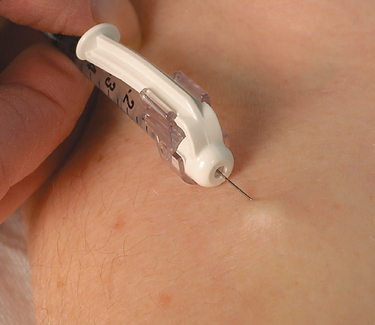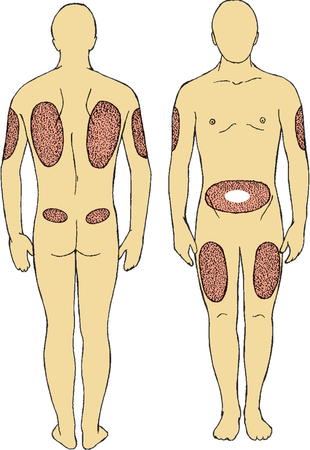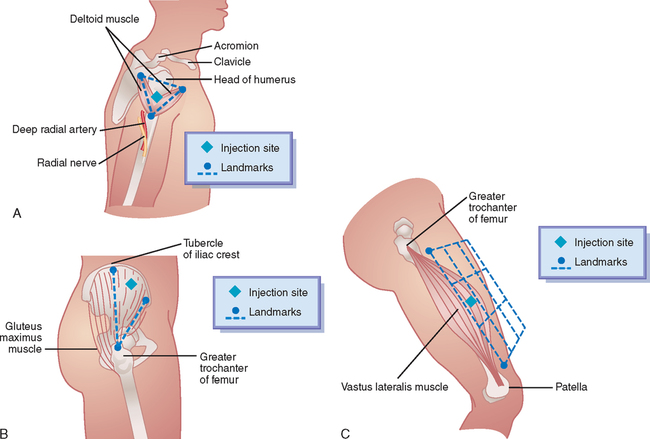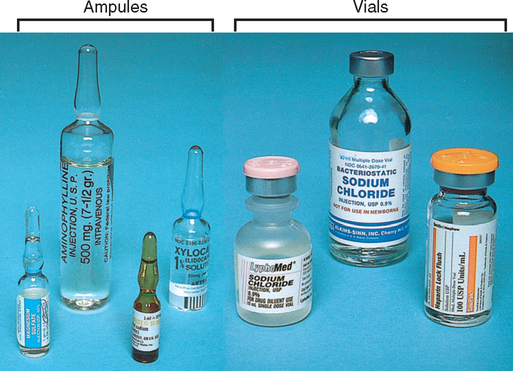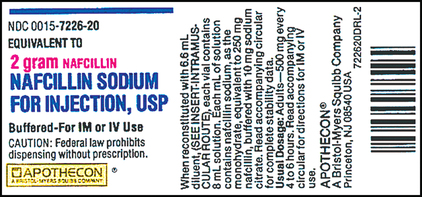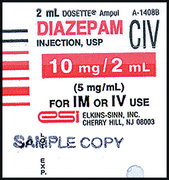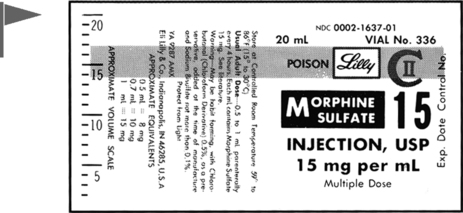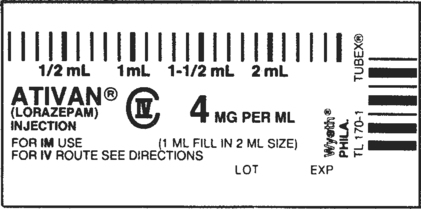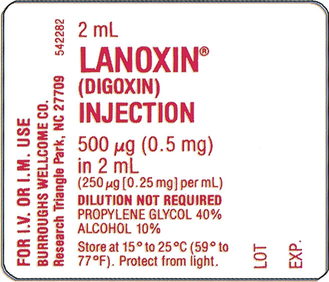The most common sites for subcutaneous injection are the subcutaneous fatty areas of the upper posterior arm, the abdomen, and the anterior thigh (Figure 8-2). Medications for subcutaneous and intramuscular injections are administered with a variety of equipment, including vials, ampules, prefilled syringes, and syringe cartridges, as illustrated below. Ampules are single-dose glass containers containing liquid medications and solutions. Vials are supplied as singledose or multidose glass containers and may contain liquid or dry medication forms (Figure 8-4). Prefilled syringes reduce the chance of contamination during preparation of the medication.
Injectable Medication Calculations
Subcutaneous Injections
![]() A 2-inch zone around the umbilicus is to be avoided. As with all injections, the sites must be rotated systematically to avoid tissue injury.
A 2-inch zone around the umbilicus is to be avoided. As with all injections, the sites must be rotated systematically to avoid tissue injury.
![]() It is best to write out subcutaneous or subcut on medical records to avoid misinterpretation. Subq and subc can be misinterpreted. Printed materials do use abbreviations such as subc or subQ but are less likely to be misinterpreted than is handwriting.
It is best to write out subcutaneous or subcut on medical records to avoid misinterpretation. Subq and subc can be misinterpreted. Printed materials do use abbreviations such as subc or subQ but are less likely to be misinterpreted than is handwriting.
Administering Injections
![]() However, they do not entirely eliminate that risk because dose adjustments may be required with prefilled syringes. They may contain 0.1 to 0.2 mL of extra medication in case of loss during preparation.
However, they do not entirely eliminate that risk because dose adjustments may be required with prefilled syringes. They may contain 0.1 to 0.2 mL of extra medication in case of loss during preparation.
![]() There are many variations on the sizes and amounts shown in Table 8-1. These figures are just averages.
There are many variations on the sizes and amounts shown in Table 8-1. These figures are just averages.
![]() Note that the 3-mL syringe for intramuscular injections corresponds to the maximum 3-mL amount preferred for intramuscular injections in one site.
Note that the 3-mL syringe for intramuscular injections corresponds to the maximum 3-mL amount preferred for intramuscular injections in one site.
![]()
Stay updated, free articles. Join our Telegram channel

Full access? Get Clinical Tree


Nurse Key
Fastest Nurse Insight Engine

